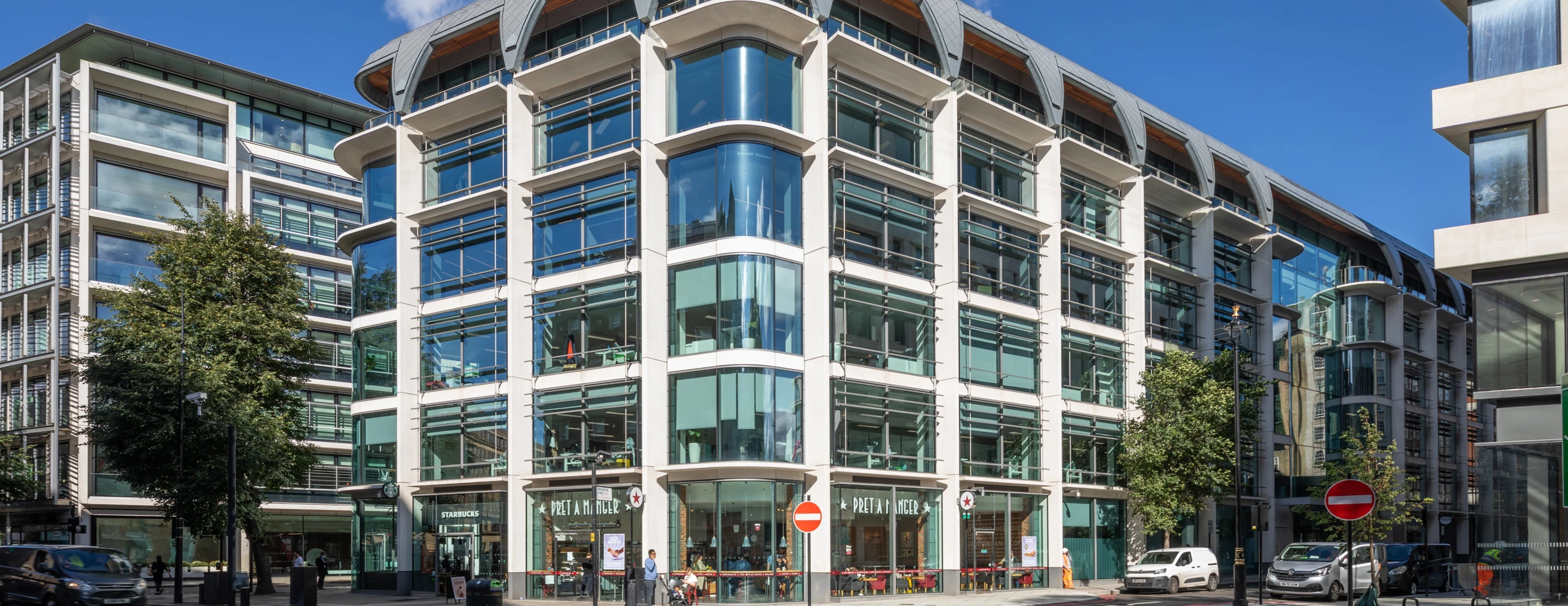Achieving a NABERS UK energy performance rating of 4.3 stars for York House is a highlight in our decarbonisation journey. Working collaboratively, the York House property team and occupiers have successfully proved that buildings constructed 20 years ago can achieve energy performance standards as high as some brand-new developments.
York House is home to British Land’s own head office and multiple other occupiers. By improving energy efficiency across the entire building by 39% vs 2020, we’ve saved occupiers nearly £50k on their energy bills this year alone and cut their carbon footprint by over 160 tonnes, supporting their decarbonisation goals and reporting.
Importantly, we’ve achieved this at the same time as enhancing comfort levels, reflected in positive customer feedback on thermal comfort and air quality data. In turn, high-performing buildings attract good leasing and occupancy, contributing to our commercial returns. Plus, with real estate accounting for around 21% of global greenhouse gas emissions, decarbonisation is simply the right thing to do.
WHAT IS NABERS?
Most people are familiar with Energy Performance Certificates (EPCs), which rate the efficiency of equipment installed in a building and modelled energy performance. Whereas, NABERS rates the actual operational performance of a building, which can be very different. Even a building with the most efficient equipment in the world will have high energy consumption if everything runs 24/7.
NABERS also supports continuous improvement through annual reviews. Founded in Australia, NABERS has achieved real success there in reducing energy consumption and driving leasing growth in certain business districts. It’s been adopted in the UK from 2020.
OPTIMISING ENERGY PERFORMANCE
British Land’s environmental audit at York House in 2021 identified opportunities to improve energy performance, replacing older equipment and engaging with occupiers on how they use their space. This led to a series of interventions, including:
- Replacing gas boilers and chillers with air source heat pumps, which use outside air for heating and cooling. York House is now fully electric, eliminating fossil fuels from the energy mix. In addition to cost and carbon savings, occupiers have commented on the improvement that the system has made to temperatures in the building.
- Installing CO2 sensors on occupier floors, so we can continuously monitor air quality and adjust ventilation as needed, always supplying the optimum fresh air flow for both wellbeing and efficiency.
- Supporting occupiers to update their lighting with the latest LEDs, which are not only more efficient and reliable than older fittings but also have more intelligent controls, so lighting is only on where and when needed. York House is now fully LED.
BALANCING OPERATIONAL AND EMBODIED CARBON
In replacing equipment, we look not only at operational carbon savings from energy efficiency but also embodied emissions associated with manufacture, transport and installation. From a carbon perspective, there’s no point installing new equipment if more embodied emissions come from its production and shipping than will be saved during operational use.
The average carbon payback on interventions at York House is 2.5 years and the financial ROI within five years. After this, equipment generates ongoing savings every year. To maximise financial and carbon returns, we always time replacements for an appropriate point in the life cycle.
LOOKING FORWARD
York House is an early adopter of NABERS UK among existing buildings and British Land is actively pursuing NABERS Design for Performance on developments, with seven projects in progress.
I’d love to see more UK buildings displaying NABERS ratings. EPCs only tell part of the story. Imagine a food hygiene rating for a restaurant that only assesses what equipment there is, without looking at how well it’s cleaned. Together, EPCs and NABERS give a fuller picture of energy performance.
York House occupiers are already asking for copies of our NABERS certificate to use in their reporting and are interested in opportunities to raise performance even higher. Lower bills. More comfort. Less carbon. Greater sustainability credentials. This is a win, win, win.
Explore our 2030 Sustainability Strategy: Greener Spaces, Thriving Places, Responsible Choices: www.britishland.com/sustainability



